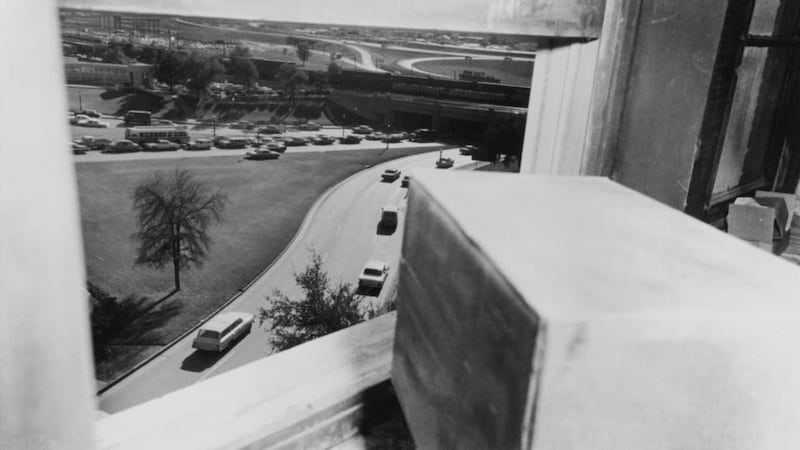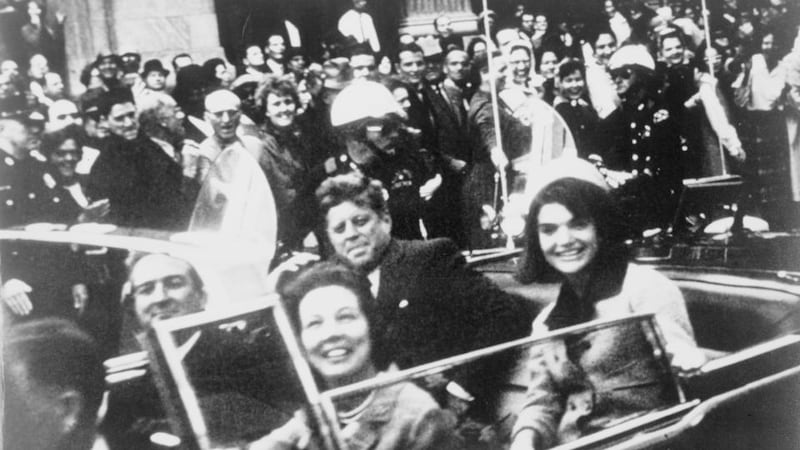Ten months after the assassination of President John F Kennedy on November 22nd 1963, in Dallas Texas, the Warren Commission concluded that he was shot by an ex-marine, Lee Harvey Oswald, who had acted alone. It also held that Jack Ruby, the nightclub owner who shot Oswald in the Dallas police headquarters two days later, had also acted alone.
Today, a majority of Americans believe that there was a conspiracy involved in the assassination and that, while Oswald almost certainly shot the President from the sixth floor of the Dallas book depository, he was part of a wider network of conspirators. Since the publication of the 888,000-word Warren Report and accompanying 27 volumes of evidence and exhibits, there have been several congressional investigations and the release of millions of words from intelligence files.
As the 50th anniversary of the killing approaches the controversy will get new life. Several blockbuster movies are in preparation involving actors Tom Hanks, Leonardo Di Caprio and Cate Blanchett.


There is no shortage of conspiracy theories. The Soviet Union, Cuba, anti-Castro Cubans, the Mafia, the CIA, disaffected Army generals, even Lyndon Johnson himself figure in the alleged plots. At one extreme, some see a plot to set up a new world order through the murders of JFK, his brother Robert and Martin Luther King, the Twin Towers catastrophe of 9/11, the invasion of Iraq and whatever your’re having yourself. But there are also many books asking legitimate questions about the Warren Report, now seen to have been too rushed as Johnson wanted it out of the way before the 1964 presidential election, which he won in a landslide.
There is huge scope for widely divergent views and the internet has been a happy hunting ground for them. The 1991 Oliver Stone movie, JFK, revived interest about the assassination especially among a younger generation but it also muddied the waters by twisting facts. Stone's version – repeated in his 2013 documentary series, The Untold History of the United States – is that Kennedy was the victim of a plot by a secret shadow government within the military-industrial-intelligence network loosely allied with Cuban exiles, the Mafia and arms manufacturers. The plotters were convinced that Kennedy was preparing to end the Cold War and withdraw all US troops from Vietnam.
Stone also built his film around the efforts in 1969 by the New Orleans district attorney, Jim Garrison, to convict a local businessman, Clay Shaw, of being part of a conspiracy of Cubans, Mafia and maverick FBI and CIA elements to eliminate Kennedy. Garrison also portrayed a scenario of 16 marksmen ready to shoot Kennedy with Oswald being used as a "patsy" to conceal the real plot. Oswald, incidentally, while denying he shot Kennedy, did describe himself as a "patsy" in the affair, meaning presumably that he was being blamed for something he did not do.
The magic bullet
The New Orleans jury found Clay not guilty after less than an hour. Garrison was largely discredited thereafter. But Stone also made dramatic use of the only film taken of the assassination, the famous Zapruder footage. Shot by a local dressmaker, Abraham Zapruder, with an 8mm cine-camera, the blurry colour film lasts for 26 seconds. It captures Kennedy and governor John Connally, who was in the car with him, first reacting to being shot and then the horrific sight of Kennedy's head exploding and Jackie Kennedy scrambling apparently to retrieve a part of the shattered skull.
Frame-by-frame analysis of the film has been used to try and fix the direction of the shots. So have the results of the autopsy on the dead president in Bethesda Naval Hospital following the rushed return of the body to Washington.
Three shells from Oswald’s mail-order rifle were found in the book depository indicating he had fired three times. The Warren Commission concluded the first shot had probably missed (a bystander was hit by a fragment). The second shot had struck Kennedy in the upper back, exited through his throat, went on to enter Connally’s torso, hit a rib, exited to hit his wrist and came to rest in his left thigh.
This bullet fell out subsequently onto his stretcher where it was retrieved. This was refered to as the “magic bullet” by sceptics who poured scorn on its surmised trajectory but the Warren Commission and some later enquiries insisted this was possible. Connally himself disputed the theory.
Oswald’s third shot shattered Kennedy’s skull from behind but the conspiracy theorists point out that the film shows his head jerking backwards proving to them that this shot came from the front, most likely from the famous “grassy knoll” ahead of the cavalcade. Closer study of the Zapruder film shows, however, that his head first went forward before a reflex backward action. In an Associated Press still photograph, the secret service bodyguards are seen looking backward towards the book depository.
At the same time a motorcycle policeman drove his bike up the slope of the grassy knoll followed by some onlookers. So was a fourth shot fired from the grassy knoll? The autopsy shows conclusively, however, that the fatal bullet entered the president's skull from the back.
Oswald in Moscow
Oswald himself remains an enigma. He had a troubled childhood after his father died. He spent time in an orphanage and a reformatory where he was diagnosed with schizoid and fantasist tendencies. He was of above average intelligence and developed an interest in socialist-Marxist theories. At 17 he joined the marine corps where he served as a radar technician in Japan and studied Russian. After his discharge, he travelled to Moscow and sought to live in the Soviet Union.
The Soviet authorities, who were suspicious, put him to work in a radio factory in Minsk where he met his future wife Marina. Oswald soon tired of life in Minsk and asked the US embassy in Moscow to authorise him, Marina and their new baby daughter to return to the US. Back in the US in June 1962, he settled first in Fort Worth, Texas and then in Dallas. He also tried to join communist parties, which kept him at a distance, suspecting him as a probable informer. Oswald also campaigned for the pro-Castro Fair Play for Cuba Committee.
In September 1963, he visited Mexico City where he contacted the Cuban and Soviet embassies, making unsuccessful attempts to obtain a transit visa to visit Cuba and then travel on to Moscow. The CIA was informed of his activities in Mexico where his phone calls were monitored. Yet when he returned to Dallas, neither the CIA nor the FBI followed up on Oswald’s activities. Following his earlier return from the Soviet Union, these agencies had shown little interest in him after an initial FBI debriefing, even though this was the height of the Cold War with the Cuban missile crisis and the building of the Berlin Wall.
The Warren Report did exhaustive psychological research into Oswald's past in the hope of finding his motive for killing Kennedy but could only conclude that he was "profoundly alienated from the world in which he lived". But would this be enough to make him act on his own to kill the president of the most powerful country in the world?
Jackie Kennedy is reported to have believed at first that it was the act of a white supremacist but when Oswald was identified she said: “He [THE PRESIDENT]didn’t even have the satisfaction of being killed for civil rights . . . it had to be some silly little communist.”
Conspiracy theories can help the need to make sense of the assassination. William Manchester, who was given privileged access by the Kennedies for his 1967 book, The Death of a President, wrote: "You want to add something weightier to Oswald. It would invest the President's death with meaning, endowing him with martyrdom. He would have died for something. A conspiracy would, of course, do the job nicely."










